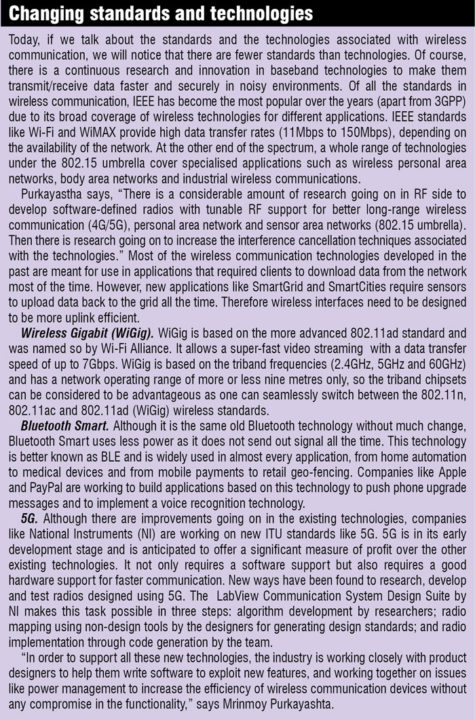Integrated transceivers
There are certain transceivers that not only offer a complete but also a high-performance mixed-signal system and RF on a single chip. In this category, there are some input/output RF based transceivers compatible with ZigBee standards that incorporate different layers of elements into another layer, facilitating a fast deployment feature.

This family of transceivers is equipped with the smart wake-up feature that enables it to wake only at defined intervals and scan the channels to receive a valid packet. It allows the designers to incorporate timing-critical elements so as to facilitate shorter deployment cycles. Such transceivers are designed for high-performance cost-effective wireless systems operating at very low-power and low-voltage conditions. These have integrated filters and so do not require any of the costly external filters.
Operational amplifiers (op-amps)
Op-amp is another important component that helps in wireless communication. It captures the sensor information, amplifies it and then passes it on.
The latest range of op-amps offer very low input offset voltage and almost zero drift. Thus, being high-precision op-amps, these allow the engineers to design a product that would process the data without much wait. This family of op-amps is virtually unaffected by any temperature change and can tolerate extreme temperatures in the range of -40°C to +125°C.
New-generation system on chip (SoC)
From BLE to the other standards, such as IEEE 802.15.4, RF4CE and ZigBee, the SoCs are compatible with many applications based on these standards. There are highly integrated SoC solutions with tightly coupled physical layer of the OSI model (PHY) and media access control (MAC) to minimise latency and to avoid complex software portioning across multiple devices. The best thing is the availability of better software suites to support the design of these SoCs.
Safe and secure communication parameters
The increasing use of wireless communication brings security into question. Then there are issues like noise, interference, energy efficiency, network coverage, reliability and latency. Purkayastha says, “Several integrated circuits with interference management and noise filtering capabilities are used in communication devices. Interference is a major issue in crowded areas, such as shopping malls, airports, busy industrial areas, etc, where MIMO with multiple antennae for transmission and reception are used for interference cancellation.” Satish Mohanram, technical marketing manager, National Instruments, says, “High-end wireless technologies like 5G require high amount of bandwidth to transfer large amount of data without any latency. MIMO provides those devices a space diversity for a deterministic transfer for data over wireless medium.”






